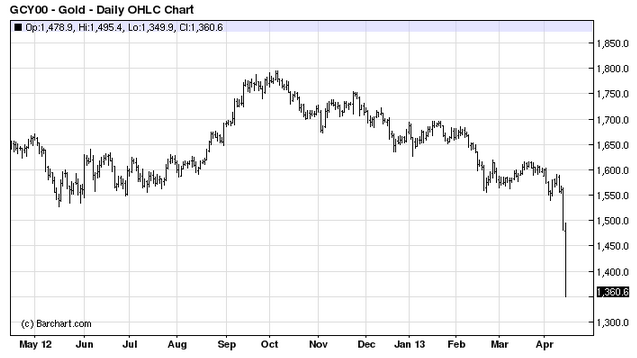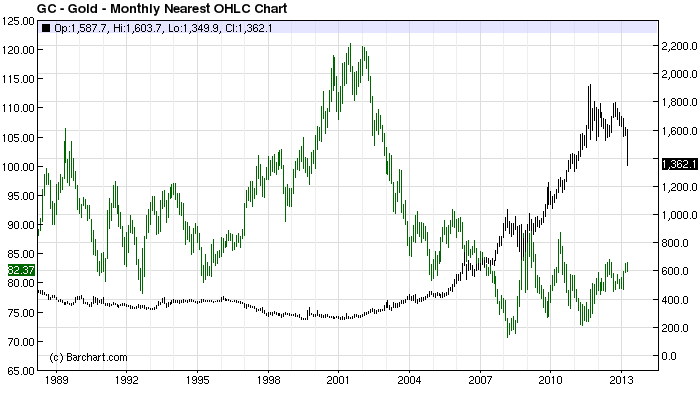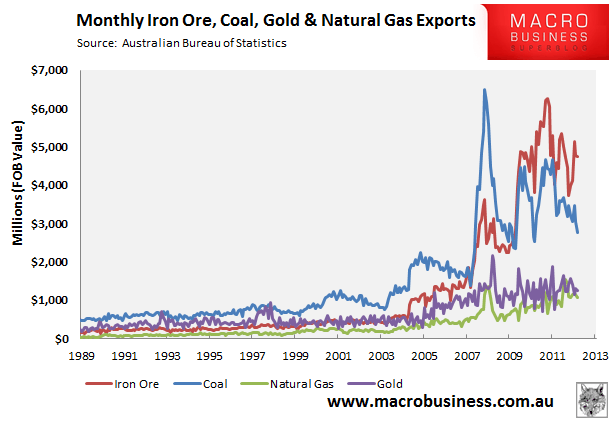
The gold crash has really got going now (and hats off to Deus Forex Machina for calling it) and brings to mind an old truth in commodity investing: that prices ride the escalator up but catch the lift down. Here is the crash on the one year chart:

And 25 year chart:

Some are claiming that this is now a once in a 2 million year Golden Swan event which is just a bit rich. Nonetheless, it is dramatic.
But what’s it saying? To understand we need know what makes gold go up in the first place. There are various marginal reasons – sovereign instability, inflation, jewellery demand – but one towers above all else, the value and stability of the dominant reserve currency, the US dollar. Here’s the money chart:

You will note that despite a neat inverse relationship, gold has no one-to-one relationship with the dollar. That is, gold went up much more than the dollar went down. I argue that is because gold’s real relationship is not to the dollar’s value itself but the degree of stability or otherwise in the policies that determine that value.
That is, a high degree of instability in US monetary and fiscal policy, especially of the expansionary type, will lead to gold appreciation. It has a one-to-one relationship with chaos in value determining settings not real value itself.
So, the direct conclusion to draw is that gold is falling because the chaos that marked US fiscal and monetary policy since the GFC is ebbing. And that is the case with the US budget coming slowly under control and, in a world of mad central bankers, monetary policy suddenly seeming much less radical than it did.
Don’t get me wrong, I’m not pretending to have all of the answers here. Gold defies such an approach. Ironically for the true believers of gold’s intrinsic value, it is the ultimate social artifact, more reliant than any fiat currency for its value on the degree of faith or skepticism in policy settings.
Thus for me, the three key events that have caused gold to correct are those that have shifted the perceptions of US money policy stability:
- Mario Draghi joining the money printers
- stabilisation in the US housing market and its gas boom
- Japan’s mad and bad QE
All of these have prevented the $US falling any further for now and into the immediate future.
The gold correction is thus good news and bad. It heralds the return of King Dollar and is good for global inflation as all commodities deflate relative to this benchmark. But it also means the US is once again saddled with its exorbitant privilege and that that will slow its recovery.
For Australia, gold’s tumble means several things. The good news is that the relative stabilisation in US policy means the Australian dollar will struggle to rise from here. The bad news is that gold is our third or fourth biggest export, roughly the same size as thermal coal, so the terms of trade is taking another hit.:

Both undermine the Australian dollar and let’s hope it falls soon because gold is signalling that the dream is over for commodities.

